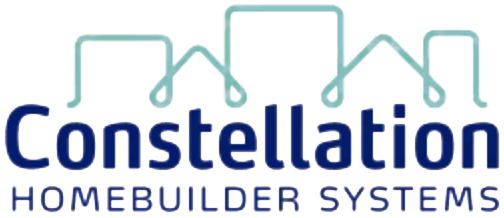Technology
Homebuilding's Top 10 Trends In '24: No. 7 The Return Of Velocity
Two interwoven questions around every conceivable detail of their operations keep people in this business up at night and hyper-focused by day. How much does it cost? And, how long does it take?

Are "vibeflation" and a "vibecession" real or imagined?
Does either matter, when the reality is that an indefinite number of high-volume believers in both "vibes" command such outsized attention?
Whether the following journalistic analysis describes reality or not, an outspoken bunch affirms every word of it.
It’s a terrible time to buy a house. But that news, bad as it is, seems to convey some promise: Someday, things will change and it will once again be a good moment to buy. You just have to wait. I’m sorry to tell you that the bad news is even worse than it sounds. It’s not going to be a good time to buy a house for a really long time. How long? I put that question to a few housing economists and real-estate experts. Their response? Who knows. A decade. “Maybe in 2030, we would start to see some relief,” Daryl Fairweather, the chief economist of Redfin, told me, before noting that 2030 was so far in the future that she could not make any kind of informed prediction." – The Atlantic
Up to now, homebuilders have found themselves on the winning side of that reality. They're producing and pricing and closing new homes for households that believe there's no better time than now to buy a home, and they've got one place to go to get one at a price they're able and willing to pay.
That's resulted in a widely noted market share gain among homebuilders, but margins have already taken a hit, and business prospects ahead suggest unrelenting higher-for-longer costs of money, land, materials, and skilled frontline trade worker capabilities.
Two interwoven questions around every conceivable detail of their operations keep people in this business up at night and hyper-focused by day.
How much does it cost? and
How long does it take?"
With no likely let-up in direct expenses to act as tailwinds for homebuilder margins in 2024, simpler, smaller home floorplans and elevations reflect a muscle-memory-like pivot for most cycle-tested operators as a win-win bridge from their own direct costs and capital expenses to the pocketbooks of households contending with an ongoing cost-of-living challenge.
Equally important, and a genuine operational imperative for homebuilding operators is that they continue to regain lost-time in their build-cycles.
In the past six months, big homebuilders report that they've recaptured from 30-to-45 days build-time from what had been lost to 2020-21 pandemic supply-chain and labor chokeholds. Normal build cycles, historically ranging four-to-five months, now see builders finally achieving start-to-completion cycles in the 120-to-150 day range. Faster build times mean savings on land carry costs like interest-payments, insurance, and other fees that add up over time. Faster inventory turns are essential for builders to recapture those costs and bring down direct expenses in construction as a way to keep their house prices competitive.
Builders can allocate their resources more efficiently when they have greater control over construction timelines. This includes labor, equipment, and subcontractor scheduling. Efficient resource allocation helps minimize idle time and reduce costs."
Many higher-volume operators – for all the progress they've made to recoup months, weeks, and days from their most prolonged start-to-completion cycles – continue to battle with two- to four-week overruns on time. Whether those delays stem from a much-noted constraint in grid transformers or some other legacy supply-chain chokehold, the urgency around solving for those issues, and gaining back that month or so in the cycle remains a critical – possibly existential – challenge for operators. This is especially the case for operators now on a tighter leash with lenders whose own books of business are under tighter Federal scrutiny in the wake of bank failures.
Velocity, remember, is not speed. Speed in a construction cycle may involve errors that can set off a calamity of costs. Velocity, on the other hand, accomplishes operational processes correctly – the first time – and at a high-quality level in a shorter duration.
Velocity ties every part of homebuilding's end-to-end lifecycle together in a way that reconciles a household's requirement for attainability with an operator's requirement for sustainable profitability.
In this context, data that is clean, shared holistically across an organization and among operational partners, relational in real-time, and thorough in capturing every decision, hand-off, bill-of-materials level detail, and cost and time-requirement value will set operators apart from one another in 2024. The ones who master velocity and regain the month or more most of them lost in 2021 – and then some – will tread a wider pathway to prosperity through some turbulence in the next 12 to 24 months.
As it relates to construction, big data is highly relevant and valuable for several reasons, says Chris Graham, President of Constellation HomeBuilder Systems. "Old methods of doing business have been replaced with new ones that enhance efficiency, quality, sustainability, and customer satisfaction."
Here are 11 reasons data technology and its implementation can impact velocity at both the home, community, divisional, and enterprise level, according to Constellation:
Data-Driven Decision-Making — Construction projects generate a vast amount of data related to project progress, resource allocation, costs, and more. Big data analytics allows construction professionals to make informed decisions based on this data, improving project efficiency and reducing risks.
Predictive Analytics — Big data enables predictive modeling, helping construction companies anticipate issues such as project delays, cost overruns, and equipment maintenance needs. This proactive approach minimizes disruptions and improves project outcomes.
Resource Optimization — With the help of big data analytics, construction managers can optimize the allocation of labor, equipment, and materials. This leads to better resource utilization, reduced downtime, and cost savings.
Design and Planning — Big data aids in the design and planning phases of construction by providing insights into site conditions, weather patterns, historical data, and local regulations. This results in more efficient and sustainable designs.
Supply Chain Management — Construction relies on a complex supply chain for materials and equipment. Big data helps in tracking inventory, managing suppliers, and optimizing logistics, ensuring that materials are available when and where they are needed.
Quality Control — Through data analysis, construction teams can monitor the quality of workmanship and materials, ensuring that the final product meets industry standards and regulations.
Safety Improvement — Big data can be used to monitor and analyze safety data, helping construction companies identify potential hazards and improve safety protocols to protect workers and prevent accidents.
Energy Efficiency and Sustainability — Big data is valuable for monitoring and improving carbon in the construction process and energy consumption in buildings. This contributes to sustainable construction practices and reduces operational costs for homes and condominiums.
Customer Analysis — Builders can use data analytics to gain insights into customer preferences and market trends, allowing them to tailor residential demands to create a robust customer experience in home building industry.
Regulatory Compliance — Staying compliant with building codes and regulations is critical. Big data can assist in ensuring that construction projects adhere to all necessary legal and environmental standards.
Post-Construction Services — Smart building technologies collect data on building usage and maintenance needs, allowing for more personalized services, remote monitoring, and predictive maintenance.
By mid-2024, best-of-breed operators will have restored velocity in their end-to-end value cycles as a standard of practice.
Constellation provides fully-integrated or standalone software solutions expertly engineered to manage the complete ecosystem of a homebuilder’s business functions and growth.
MORE IN Technology
Design-Estimating Disconnects Cost Builders Time And Margin
Former builder-operators Brandon Pearson and Marcus Gonzalez share what’s broken—and how connected teams can win now and in 2030.
What Separates Homebuilders Thriving Amidst 2025’s Chaos
Builders face rising stakes to unify tech, data, and operations or risk falling behind amid affordability, insurance, and labor challenges.
Margin Mission: Homebuilders Race To Crack Inefficiency Code
Spring 2025 has fallen short of expectations. Builders are turning to integrated data systems to protect margins and prep for the next wave.


